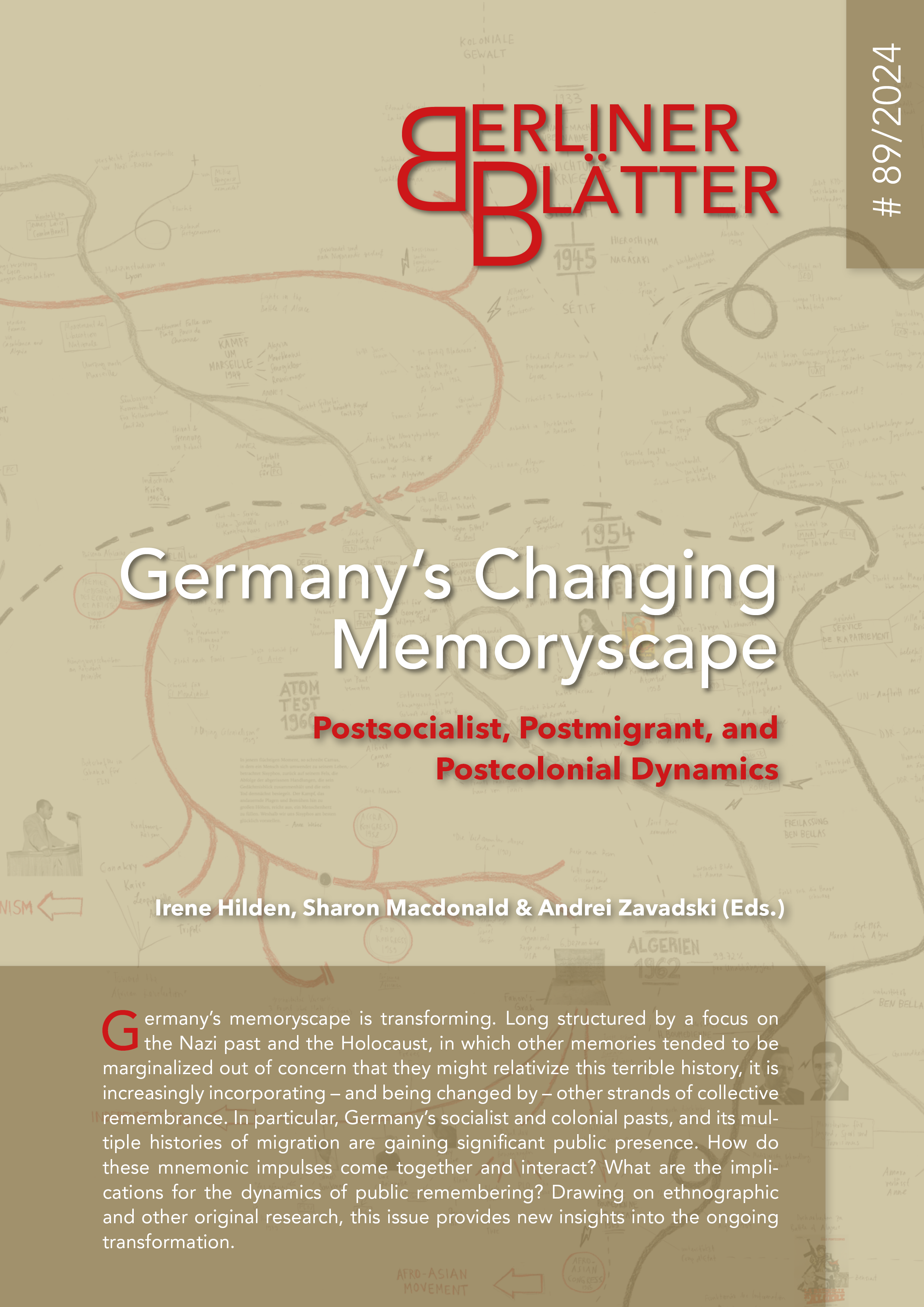On the Sidelines
Silenced Legacies and Challenges of Cultural Memory in the Founding of the Museum of European Cultures in Berlin
DOI:
https://doi.org/10.18452/28742Keywords:
German memory culture, difficult heritage, Multidirectional Memory, Museum of European Cultures, (post)migrant societyAbstract
The founding of the Museum of European Cultures (Museum Europäischer Kulturen, MEK) is the product of a complex process of fusion and transformation. In 1992, in the aftermath of German unification, the state folklore museums of East and West Berlin – Museum für Volkskunde and Museum für Deutsche Volkskunderespectively – were merged to form a united Museum of Folklore (Museum für Volkskunde). In 1999, the latter merged with the European Department of the Museum of Ethnology (Abteilung Europa des Museums für Völkerkunde) and was named the Museum of European Cultures. This article addresses the tension between the continuous marginalization of the MEK with its “difficult heritage” (Macdonald 2009, 1) in the shadow of the German Historical Museum (Deutsches Historisches Museum) and the Humboldt Forum, and the political history of its founding process after 1989. Looking at the history of this museum’s transformation in light of Michael Rothberg's (2021 [2009]) multidirectional memory-political dynamics, it becomes clear how different vectors of memory have overlapped and influenced each other in the process, including memories of the Second World War, East-West division of Germany, and the country’s subsequent unification. At the same time, a fundamental change in museum practice can be observed in the course of the museum’s 'European' transformation, which is inscribed in the memory-cultural dynamics of a (post)migrant society.
Downloads
Published
2024-06-07
How to Cite
Früh, A. (2024). On the Sidelines: Silenced Legacies and Challenges of Cultural Memory in the Founding of the Museum of European Cultures in Berlin. Berliner Blätter, 89, 25–41. https://doi.org/10.18452/28742
Issue
Section
Artikel
License
Copyright (c) 2024 Berliner Blätter

This work is licensed under a Creative Commons Attribution-NonCommercial-ShareAlike 4.0 International License.






